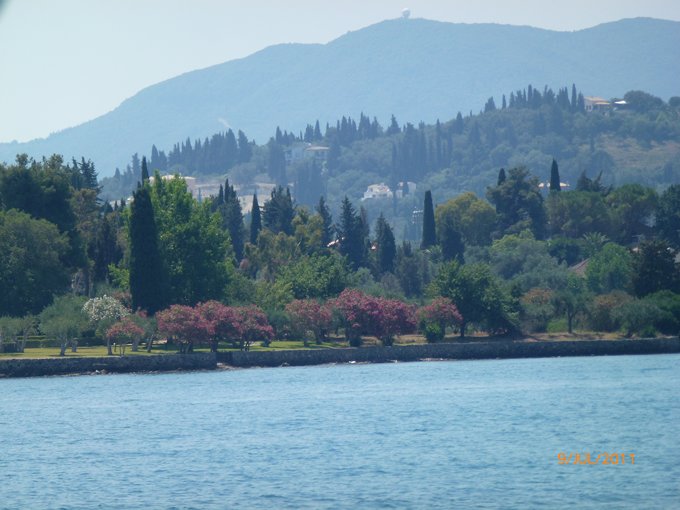Corfu town

Monday, 11th July, 2011.
From Gouvia marina Jim and I took the bus into Corfu town centre for two reasons. One to check out the buses to and from the airport for arriving friends and secondly to find a Vodafone shop to sort out a new USB stick for the computer. The buses were no problem but on speaking with Vodafone they wanted 60 euros a month for a connection. We tried two other suppliers to no avail. We have managed the last two days to use the notebook at the cafe but it would be easier to be able to use it on Ariel especially for the weather reports. When we return to Corfu town we will have to bite the bullet and pay for the honour now we have got use to the idea.
Everything we have seen of Corfu is very nice. Corfu town was no exception. Corfu is the name by which we tourists know the island but the Greeks call it Kerkyra. It has a lush green landscape and the bays have lots of villa’s dotted in the hills together with hotel complexes. 75% of visitors to Corfu are British and it is not surprising most of the people you speak to can converse in English. Corfu town is on the east coast and looks across to the borders of Albania and Greece on the mainland.
Corfu started out life as a colony of Corinth, the first settlers arrived in 734 BC. The island played little part in the rise of Athens or the defeat but Corfu saw a succession of rulers but it was always on the fringes of the Hellenic world. The island came under Roman rule in 220 BC when Emperor Augustus made it his base prior to the battle of Actium. Nero is said to have dropped in about 67 AD. Corfu over the years never saw Turkish rule although the island was raided and besieged in 1537 when 20,000 inhabitants were carried off into slavery. In 1716, Saint Spiridon, Corfu’s patron saint saved the day by bringing on a rainstorm in August. Every year on the 11th August Corfu celebrates this day. It is also documented that about every fourth male born on the island is named after the saint.
The arrival of Napoleon in 1797 saw the end of Venetian rule and in came a period of unstable French rule. The British took over Corfu between 1815 and 1864 when control was given to the new Greek state.
There are colonial houses in the town of French and British Georgian buildings with two huge fortresses, a cricket pitch in front of the Royal Palace which now houses Chinese and Japanese porcelain and bronzes. There are many museums in the town with something for everyone such as the Archaeological Museum which houses sculptures from the Temple of Artemis 580 BC.
We enjoyed the side alleys and all the little shops. As it was so hot we stopped at a restaurant overlooking the bay for lunch. It was a marvellous place to stop and we enjoyed a lovely Greek salad before making our way back through Corfu town to the bus stop.





